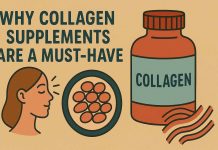Breast cancer afflicts American women more than any other type of cancer. Approximately 30% of all cancer cases diagnosed in 2017 were breast cancers. Some women with the disease will have to get one or both breasts removed by a mastectomy. This is a surgical operation to remove a breast. Reconstruction of the breast is typically performed immediately after the mastectomy. Women that are at a high risk for breast cancer may choose the surgery to reduce their risk. Breast implants are used in one of the main techniques to reconstruct the breast after a mastectomy. The other technique uses tissue reconstruction. Tissue is harvested from other parts of the body and used to reconstruct the breast. The quantity and quality of the remaining breast tissue after a mastectomy determines which method is best. The entire process, including radiation treatment and the loss of one or both breasts, can be devastating to a woman’s body image. The reconstruction of the breast can help to restore confidence and self esteem.
Breast Reconstruction Using Implants
Breast reconstruction can be done immediately after a mastectomy or at a later date. Risk factors for surgery like smoking and being overweight are among the main determinants of the timing. Radiation therapy is another. The procedure is done on an inpatient basis, and any follow-ups are typically outpatient. Your doctor will discuss all aspects of the surgery with you, and the best choices for your particular situation. For example, the reconstructed breast will maintain its shape and position much better than the natural breast. This will become more apparent as you age, or if you experience a drastic change in weight. Larger breasts are more prone to sag than smaller or medium-sized breasts. This will produce mismatched breasts. Additional surgery may be needed at later dates to correct this dissimilarity.
Types of Implants used in Reconstruction
The two types of implants used in reconstructing the breast after a mastectomy are saline and silicone. Both implants are made with a silicone shell. The saline implant is filled with a salt water solution and the silicone implant is filled with silicone gel. They are available in different shapes and textures. Saline is more commonly used for a variety of reasons. Many women are more comfortable with saline because it is safely absorbed by the body. The main concern with silicone is potential leakage of the substance into surrounding tissues. Both types have a slight risk of rupturing. Research has been conducted regarding safety issues of implants, and both types have been deemed safe for use. Silicone implants were approved by the U.S. Food and Drug Administration for breast reconstruction in 2006.
Implant Insertion After Mastectomy
The procedure for inserting an implant after a mastectomy depends on breast size and remaining breast tissue. Sometimes the breast skin has to be expanded to create a pocket for the implant. A temporary device called a tissue expander can be placed between the skin and muscle to gradually stretch the area to the desired size. This is accomplished over a timeframe of 2 to 6 months by periodically injecting saline into the device. The device is then removed and replaced by the breast implant. This is generally performed as outpatient surgery. Women that have a sufficient amount of skin or average size breasts can sometimes bypass the tissue expansion process, and get the implant directly inserted. Women who want to have a smaller reconstructed breast size in comparison to their natural size may also use this method. This is because these women typically have enough skin tissue for the envelope, which is the area between the skin and muscle. This area is used to cover the entire implant.
Placement of Breast Implants
Implants can be placed above or below the chest muscle, but they’re usually placed under it to allow for more soft tissue coverage. This can become an issue for athletic women or women that otherwise use their chest muscles a lot. Frequent contractions of the chest muscle can cause the implant to look distorted. Placing the implant above the chest muscle eliminates this problem, but this technique requires very thick skin flaps after a mastectomy. A skin flap is the term used to describe the remaining breast tissue, or the available tissue that can be manipulated to cover the implant.
Silicone or Saline Implants
Some of the advantages of using saline versus silicone implants are the same for breast reconstruction as for other procedures. Saline is safely absorbed back into the body in cases of a ruptured implant. Silicone does not get absorbed, and some of the gel might leak into the soft tissue around the implant and rest there. The volume of the breast will remain the same if the implant contains silicone, and this may delay detection of a rupture. The size of the expander used for tissue expansion can be increased or decreased after the surgery for saline implants, but not for silicone. Additionally, it is important to pick the appropriate size of the implant when choosing to undergo breast augmentation with implant surgery. Women that chose saline implants have a higher rate of satisfaction, but they also needed more postoperative surgery on the reconstructed breast. Fixed-volume implants have scored higher satisfaction rates than the variable-volume version. Both are available with saline or silicone filling. The fixed-volume implant has significantly lower rates of needing additional surgeries. The advantages of silicone include its natural look and feel, as well as its texture. The“gummy implant” is a type of silicone implant that gives the reconstructed breast a more natural shape. There’s also less visible wrinkling with this type of implant. In addition, there’s less risk for capsular contracture, which is when scar tissue forms around the implant and distorts its shape. This condition can also cause the implant to become hard and painful. This advantage is due to the implant’s slightly rough texture.
The techniques and prosthetics used in a mastectomy are continually being improved upon technological advances. Discuss your options with a qualified and experienced plastic surgeon. Dr. Steinbrech is a board certified plastic surgeon specializing in breast augmentation, breast reconstruction, and other surgical procedures for women and men and is available for consultation in Manhattan, New York City. Dr. Steinbrech received his training at New York University’s Institute of Plastic and Reconstructive Surgery. He was selected as one of America’s top plastic surgeons by the Consumers Research Council of America. Further information can be found at www.drsteinbrech.com.











